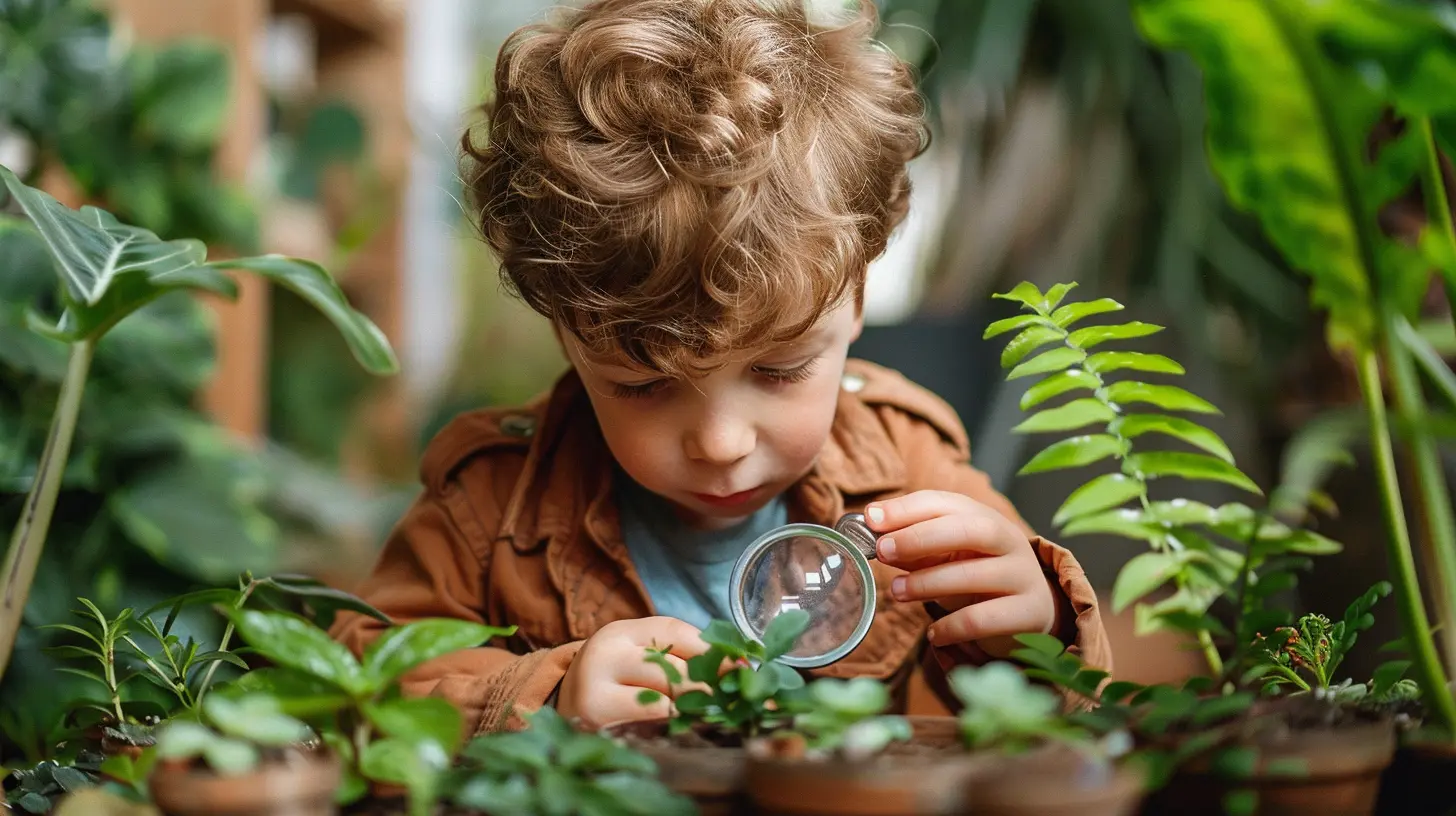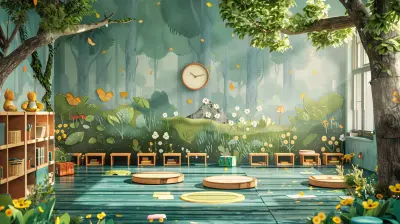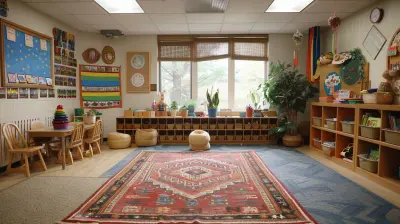25 May 2025
When you think of STEM (Science, Technology, Engineering, and Math), you might picture complex equations or high-tech gadgets. But did you know that preschoolers can start developing STEM skills at an early age? In fact, young children are natural scientists—they ask endless questions, experiment with their surroundings, and learn through play.
So, how can we nurture this curiosity and introduce STEM concepts in a fun and engaging way? Let’s dive into why STEM is important for preschoolers, how to incorporate it into daily activities, and some simple, hands-on experiments to spark their interest.

Why is STEM Important for Preschoolers?
Preschoolers are like sponges—absorbing knowledge from everything they see, hear, and touch. By introducing STEM concepts early, we lay the foundation for critical thinking, creativity, and problem-solving skills.Here’s why STEM is essential for little learners:
- Encourages Curiosity: Kids are naturally inquisitive. STEM activities give them the freedom to ask "why" and "how" questions, guiding them toward discovery.
- Develops Problem-Solving Skills: STEM fosters logical thinking by challenging kids to find solutions, make observations, and test ideas.
- Boosts Creativity: Science and engineering are not just about facts—they also involve imagination and creativity in coming up with new ideas.
- Prepares Them for the Future: As technology continues to evolve, STEM skills will be more important than ever. Starting early gives kids a head start in developing essential skills.

How to Introduce STEM to Preschoolers
You don’t need fancy equipment or advanced knowledge to introduce STEM concepts at home or in the classroom. The key is to make learning fun and interactive. Here are some simple ways to get started:1. Encourage Hands-on Exploration
Preschoolers learn best through hands-on activities. Let them explore the world around them through play, experiments, and creative building.- Give them blocks, LEGO bricks, or household items to build towers and bridges.
- Let them mix baking soda and vinegar to watch a fizzy reaction.
- Offer magnifying glasses to examine leaves, bugs, or everyday objects up close.
2. Ask Open-Ended Questions
Instead of giving direct answers, encourage critical thinking by asking questions like:- "What do you think will happen when we mix these colors?"
- "How can we make this bridge stronger?"
- "Why do you think the ice is melting so fast?"
This sparks curiosity and helps kids develop their reasoning skills.
3. Use Everyday Activities as Learning Opportunities
STEM is all around us! Everyday activities can be great learning moments:- Cooking: Measuring ingredients introduces math concepts, while watching dough rise involves science.
- Bath Time: Floating and sinking toys teach basic physics.
- Nature Walks: Observing plants, bugs, and weather patterns encourages scientific thinking.
4. Incorporate Books and Storytelling
Children’s books about science, technology, and engineering make STEM accessible and engaging. Some great options include:- Rosie Revere, Engineer by Andrea Beaty
- The Most Magnificent Thing by Ashley Spires
- Ada Twist, Scientist by Andrea Beaty
Reading stories about curious characters helps preschoolers see STEM in action and inspires them to be little explorers themselves. 
Fun and Easy STEM Activities for Preschoolers
Now that we know why STEM is important, let’s get hands-on! Here are some simple and exciting activities that will get preschoolers excited about science, technology, engineering, and math.1. Sink or Float Experiment
What you need:- A large bowl of water
- Various small objects (toy car, sponge, rock, plastic bottle cap, etc.)
What to do:
1. Ask your child to predict whether each item will sink or float.
2. Drop each item in the water and observe what happens.
3. Talk about why some objects float while others sink.
STEM Concept: Teaches buoyancy, density, and observation skills.
2. Building a Marshmallow Tower
What you need:- Mini marshmallows
- Toothpicks
What to do:
1. Challenge your child to build a tall structure using marshmallows and toothpicks.
2. Discuss which designs are strong and which ones collapse easily.
3. Try to make a bridge or other shapes.
STEM Concept: Encourages engineering, problem-solving, and creativity.
3. Color Mixing Magic
What you need:- Red, blue, and yellow food coloring
- Clear cups of water
- Spoon or dropper
What to do:
1. Add a few drops of two different colors into a cup.
2. Stir and watch new colors form!
3. Talk about primary and secondary colors.
STEM Concept: Teaches color theory, chemistry basics, and cause-and-effect relationships.
4. Shadow Play
What you need:- A flashlight or natural sunlight
- Toys or household objects
What to do:
1. Shine a flashlight on objects to create different-sized shadows.
2. Move the light closer or farther to see what happens.
3. Experiment with hand shadow puppets.
STEM Concept: Encourages understanding of light, shadows, and perspective.
5. Rainbow Walking Water Experiment
What you need:- 6 clear cups
- Paper towels
- Water
- Red, yellow, and blue food coloring
What to do:
1. Fill every other cup with water and add a few drops of food coloring (red in one, yellow in another, blue in the last).
2. Fold a paper towel and place one end in a colored water cup and the other in an empty one.
3. Wait and watch the water move through the paper towels, blending colors!
STEM Concept: Demonstrates capillary action, absorption, and color mixing. 
Making STEM Part of Everyday Conversations
STEM learning doesn’t have to be structured—it thrives in everyday moments. Here’s how you can keep the curiosity alive:- Celebrate Questions: If your child asks why the sky is blue or how a car moves, turn it into a small discovery session.
- Encourage Tinkering: Let them take apart old gadgets (under supervision!) to see what's inside.
- Model a Growth Mindset: Mistakes are part of learning. Show them that failing and trying again is how we grow.
Final Thoughts
STEM for preschoolers is all about fun, exploration, and curiosity. By incorporating simple experiments, asking thought-provoking questions, and encouraging hands-on play, we can help little ones develop a love for learning that lasts a lifetime.Remember, every child is born with curiosity—it’s up to us to nurture it! So, let’s get messy, ask big questions, and inspire the next generation of scientists, engineers, and thinkers.








Lauren Peterson
Great article! Nurturing curiosity in preschoolers through STEM not only sparks their imagination but also lays a strong foundation for lifelong learning. Keep inspiring young minds!
November 13, 2025 at 9:52 PM